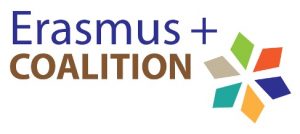Guiden, redigerad av Helena Reierstam, Kallia Katsampoxaki-Hodgetts och Meeri Hellstén på Stockholms universitet, är ett verktyg för självreglering och -utveckling för fakulteter. Målgrupper: samordnare, programledare och beslutsfattare inom området. Den innehåller ett konceptuellt ramverk, fallstudier från sex europeiska universitet och policyrekommendationer, och ger evidensbaserade strategier för inkluderande studentcentrerad undervisning.
Guiden är framtagen inom ett EU:s Erasmus+ COALITION-projekt som handlar om inkluderande undervisning i högre utbildning. I COALITION-projektet samarbetade sex universitet kring ämnet inkluderande studentcentrerad pedagogik (i-SCP) och fakultetsutveckling i högre utbildning. De utbytte metoder för fakultetsutveckling och delade kunskap och expertis om inkluderande studentcentrerad undervisning.




